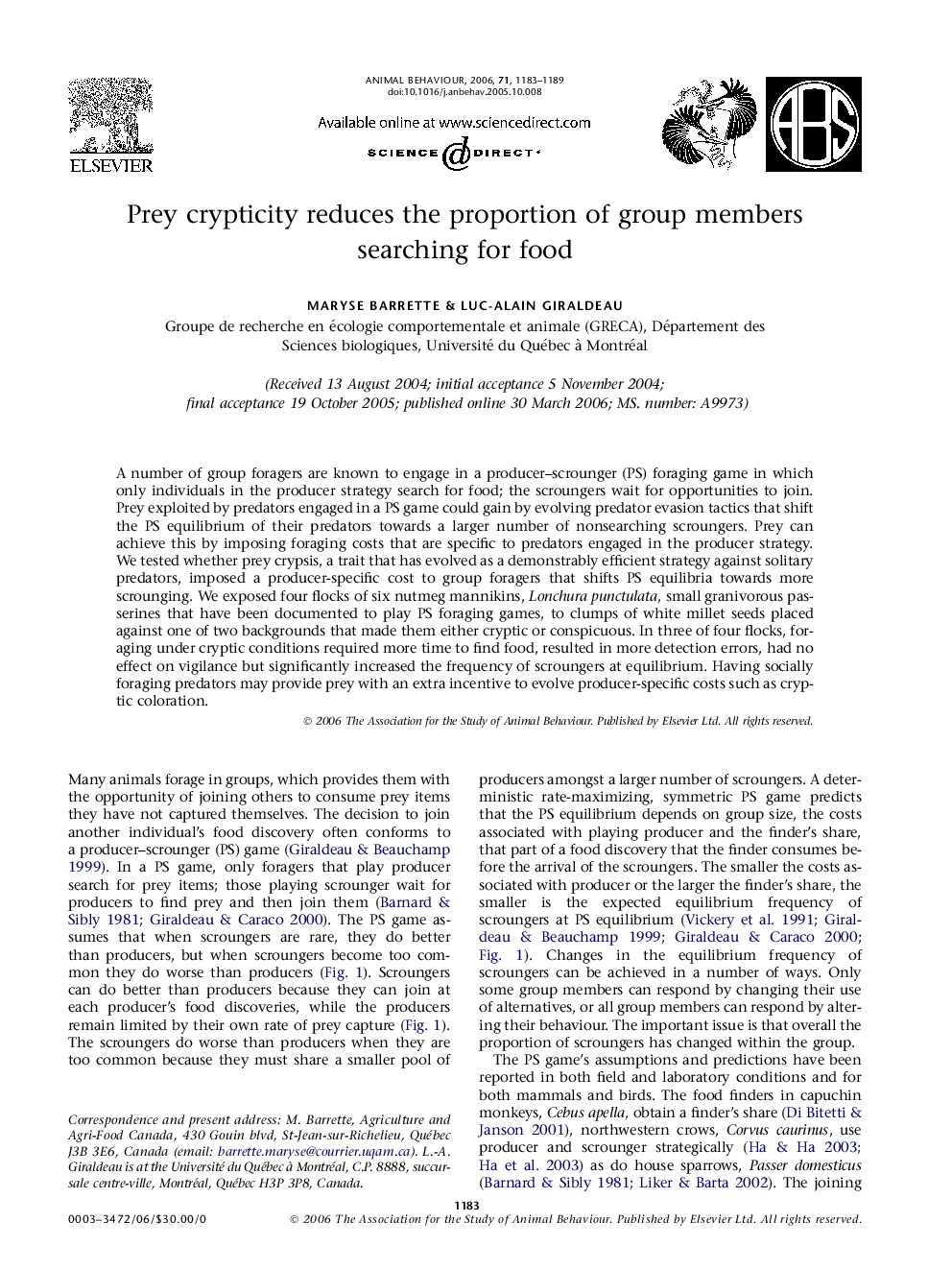| Article ID | Journal | Published Year | Pages | File Type |
|---|---|---|---|---|
| 2418677 | Animal Behaviour | 2006 | 7 Pages |
Abstract
A number of group foragers are known to engage in a producer-scrounger (PS) foraging game in which only individuals in the producer strategy search for food; the scroungers wait for opportunities to join. Prey exploited by predators engaged in a PS game could gain by evolving predator evasion tactics that shift the PS equilibrium of their predators towards a larger number of nonsearching scroungers. Prey can achieve this by imposing foraging costs that are specific to predators engaged in the producer strategy. We tested whether prey crypsis, a trait that has evolved as a demonstrably efficient strategy against solitary predators, imposed a producer-specific cost to group foragers that shifts PS equilibria towards more scrounging. We exposed four flocks of six nutmeg mannikins, Lonchura punctulata, small granivorous passerines that have been documented to play PS foraging games, to clumps of white millet seeds placed against one of two backgrounds that made them either cryptic or conspicuous. In three of four flocks, foraging under cryptic conditions required more time to find food, resulted in more detection errors, had no effect on vigilance but significantly increased the frequency of scroungers at equilibrium. Having socially foraging predators may provide prey with an extra incentive to evolve producer-specific costs such as cryptic coloration.
Related Topics
Life Sciences
Agricultural and Biological Sciences
Animal Science and Zoology
Authors
Maryse Barrette, Luc-Alain Giraldeau,
